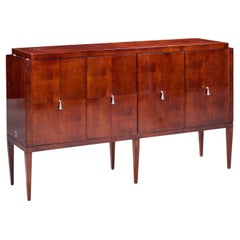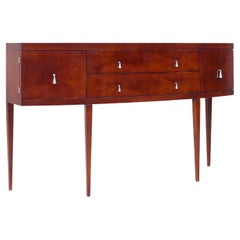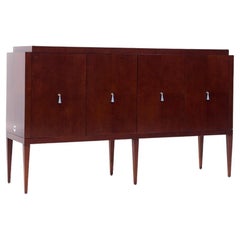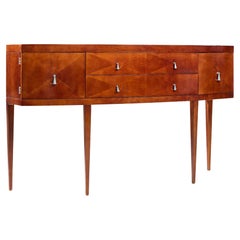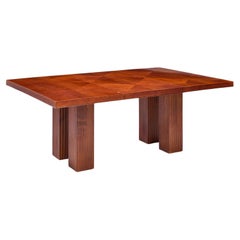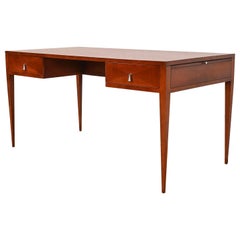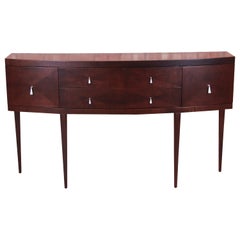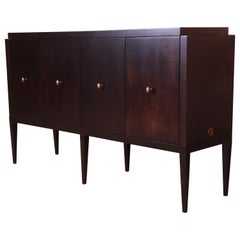Baker Michael Vanderbyl Archetype
Late 20th Century American Modern Credenzas
Mahogany
Late 20th Century American Modern Credenzas
Mahogany
Early 2000s American Modern Credenzas
Metal
Late 20th Century American Modern Credenzas
Mahogany
Late 20th Century American Modern Dining Room Tables
Mahogany
1990s American Modern Desks
Nickel
Recent Sales
Late 20th Century American Modern Sideboards
Nickel
Late 20th Century American Modern Sideboards
Brass
Early 2000s American Modern Dining Room Tables
Mahogany
1990s American Art Deco Side Tables
Metal
People Also Browsed
Antique Early 1900s Austrian Vienna Secession Benches
Beech, Bentwood
Vintage 1930s French Art Deco Cabinets
Nickel
Antique Early 18th Century Chinese Qing Sideboards
Elm
Antique Late 19th Century Dutch Sofas
Fabric, Palmwood
Vintage 1950s American Mid-Century Modern Commodes and Chests of Drawers
Metal, Aluminum
20th Century American Organic Modern Dining Room Tables
Leather, Faux Bamboo, Oak
21st Century and Contemporary Vietnamese Art Deco Beds and Bed Frames
Fabric, Wood
21st Century and Contemporary Dinner Plates
Porcelain
Early 2000s American Hollywood Regency Dining Room Chairs
Leather, Wood
20th Century American Mid-Century Modern Commodes and Chests of Drawers
Brass
Antique Early 19th Century French Art Deco Patio and Garden Furniture
Stone, Iron
Vintage 1960s Empire Dressers
Brass
20th Century American Mid-Century Modern Desks and Writing Tables
Wood
Vintage 1930s French Art Deco Sideboards
Glass, Wood
2010s German Art Deco Sideboards
Copper
Vintage 1960s Italian Mid-Century Modern Credenzas
Rosewood
Baker Furniture Company for sale on 1stDibs
Owing to the company’s collaborations with many leading designers and artists over time, vintage Baker furniture is consistently sought after today. The heritage brand’s chairs, dining tables, desks and other pieces are widely known to collectors and design enthusiasts for their fine craftsmanship and durability.
Within a few decades of its launch, Baker Furniture Company evolved into one of the largest and most important furniture manufacturers in the United States and became known for its high-quality production standards. Siebe Baker and business partner Henry Cook founded the original iteration of Baker Furniture Company in 1890 in Allegan, Michigan, after immigrating to the United States from the Netherlands. Allegan is a small town west of Grand Rapids, which, at that time was home to Widdicomb Furniture Co. and more and was known as America’s furniture capital. The company manufactured doors and interior moldings and introduced a combination desk and bookcase in 1893. In the early 1900s, Siebe became the sole owner of the business.
Among others, stage designer Joseph Urban and modernist designer Kem Weber contributed designs to Baker in the 1920s. In 1932, under the leadership of Siebe’s son, Hollis, who started at the company as a salesman but took the reins when his father passed in 1925, Baker Furniture introduced bedroom pieces and debuted its Manor House collection, which made reproductions of European furnishings available to the American market. (Hollis was an avid traveler and procured antiques overseas for the company to reproduce in the United States.) Soon, Baker Furniture Company moved to Holland, Michigan, and eventually opened showrooms in Grand Rapids and elsewhere.
Pioneering Scandinavian designer Finn Juhl created a Danish modern line for Baker in 1951, and the company produced his award-winning Chieftain chair for a short time. In the late 1950s, Baker introduced the Milling Road label to reach a younger audience with stylish but less costly furnishings like console tables, walnut dining chairs and more, and in 1961, British furniture designer T.H. Robsjohn-Gibbings introduced a modern neoclassical line at Baker.
The 1960s and ’70s saw the introduction of historic reproduction furniture lines such as Woburn Abbey and the Historic Charleston collection, which remain very popular to this day. In 1990, Baker was licensed to produce a furniture line from Colonial Williamsburg. That same year, the Smithsonian Museum introduced Baker’s Chippendale chair into its permanent collection and the Grand Rapids Art Museum dedicated an exhibition to Baker’s 100th anniversary, a showcase that included 150 pieces of furniture Siebe Baker had collected as part of a larger assortment that had served as inspiration for his designs.
Today, vintage Baker furniture, such as its elegant mahogany nightstands and teak credenzas — particularly those crafted by Finn Juhl — sees high demand online and elsewhere. The company continues to produce contemporary collections with well-known designers such as Bill Sofield, Barbara Barry and Kara Mann and remains on par with some of the highest quality furniture in the industry.
Browse vintage Baker armchairs, sofas, coffee tables and other furniture on 1stDibs.
A Close Look at Modern Furniture
The late 19th and early 20th centuries saw sweeping social change and major scientific advances — both of which contributed to a new aesthetic: modernism. Rejecting the rigidity of Victorian artistic conventions, modernists sought a new means of expression. References to the natural world and ornate classical embellishments gave way to the sleek simplicity of the Machine Age. Architect Philip Johnson characterized the hallmarks of modernism as “machine-like simplicity, smoothness or surface [and] avoidance of ornament.”
Early practitioners of modernist design include the De Stijl (“The Style”) group, founded in the Netherlands in 1917, and the Bauhaus School, founded two years later in Germany.
Followers of both groups produced sleek, spare designs — many of which became icons of daily life in the 20th century. The modernists rejected both natural and historical references and relied primarily on industrial materials such as metal, glass, plywood, and, later, plastics. While Bauhaus principals Marcel Breuer and Ludwig Mies van der Rohe created furniture from mass-produced, chrome-plated steel, American visionaries like Charles and Ray Eames worked in materials as novel as molded plywood and fiberglass. Today, Breuer’s Wassily chair, Mies van der Rohe’s Barcelona chair — crafted with his romantic partner, designer Lilly Reich — and the Eames lounge chair are emblems of progressive design and vintage originals are prized cornerstones of collections.
It’s difficult to overstate the influence that modernism continues to wield over designers and architects — and equally difficult to overstate how revolutionary it was when it first appeared a century ago. But because modernist furniture designs are so simple, they can blend in seamlessly with just about any type of décor. Don’t overlook them.
